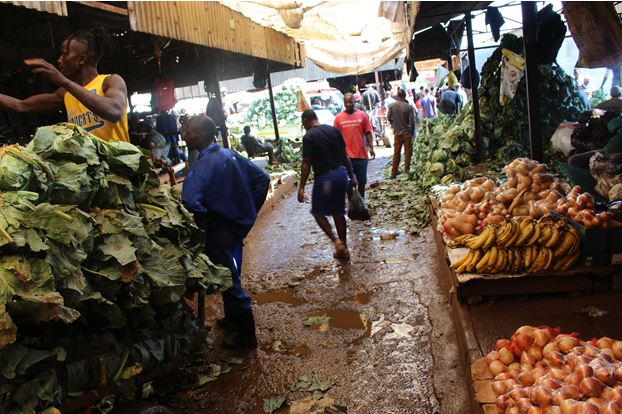|
Getting your Trinity Audio player ready…
|
By Charles Dhewa
One of the most overlooked trends in African agriculture-driven economies is the buying power of local consumers. When the private sector, government departments, and development agencies support agriculture, they rarely think about whether local consumers will afford what will be produced or not. At worst, this oversight leads to over-production, translating to huge losses for farmers and the entire food production system. The entire agriculture system is often unprofitable.
Food supply chains are sustained by consumer buying power
COVID19 showed the value of consumer buying power when a series of lockdowns constrained the capacity of many consumers and SMEs to buy raw agricultural commodities from African markets. Consequently, farmers incurred huge losses with some selling fresh commodities at give-away-prices. The situation was worse where food markets were allowed to open while several SMEs categories were not allowed to operate on the pretext that their services were not essential.
What has become clear is that absence of initiatives that trigger buying power means there is no business for many actors in food supply chains. Low buying power has a negative impact on farmers because, with a tight budget, consumers prioritize unavoidable expenses like transport costs to work, school fees, rentals, and many others which consumers have no control over. This means expenses related to the farmer and his/her commodities become less prioritized by consumers. From a food perspective, consumers prioritize necessities after meeting externally-determined expenses. The first food priority is basic necessities like leafy vegetables and tomatoes.
The more the budget is constrained the more some commodities like carrots, potatoes and fruits are considered luxuries. Unfortunately, farmers only come face to face with low prices when they have already invested and they see low demand in the market. Due to COVID19-related supply chain disruptions, processed products have also suffered from low buying power and demand. For instance, when consumers started considering potato chips a luxury, low demand for these products became the order of the day, and processing companies could not continue processing what has no demand.
Buyers and consumers becoming price-setters
Low consumer buying has been in the form of consumers bringing small budgets to the market where several commodities compete for that small budget and this has forced prices of most commodities downwards. When traders discover that consumers are bringing a smaller budget to the market, they also offer low prices to farmers and farmers have no choice because they will have already produced commodities, some of which are highly perishable.
How can policymakers deal with suppressed demand?
In African economies dominated by SMEs like Kenya and Zimbabwe, the lifting of lockdowns after several months of inactivity has seen SMEs prioritizing rebuilding their capital. This has directly impacted farmers who are bringing commodities to the market where demand remains subdued. African countries are often not ready to deal with suppressed demand for agricultural and food commodities at the national level. What makes this a national and policy issue is that suppressed demand due to low buying power has a direct impact on employment creation. If supply chain actors fail to get income for re-investing in their enterprises, they lay off employees, and unemployment increases. If a farmer makes a 30% loss it means the next planting season will be 30% less as well as potential employment.
What can be done in situations of suppressed demand due to low income or buying constraints among consumers? While some consumers enjoy very low prices of potatoes and other commodities, farmers are often on the receiving end because their returns are lower than their investments in producing the commodities. A critical part of the solution can be developing market options to regulate or release pressure from local markets in times of gluts/good harvests, in times of shocks like COVID19, and in times of suppressed demand.
Market options could include regional and international markets. This should not be once-off activity but sustained national investment, enabling farmers to know they are growing commodities for a particular demand. The other intervention can be developing supply chain distribution systems. For instance, while in one part of the country commodity prices may be low due to over-supply, shortages of the same commodities in other parts of the country can be driving prices high in those areas. That is why African countries should prioritize establishing distribution systems that enable commodities from high production zones to be distributed to high demand areas and arrive at affordable prices for local consumers while farmers and distributors earn economic profits.
